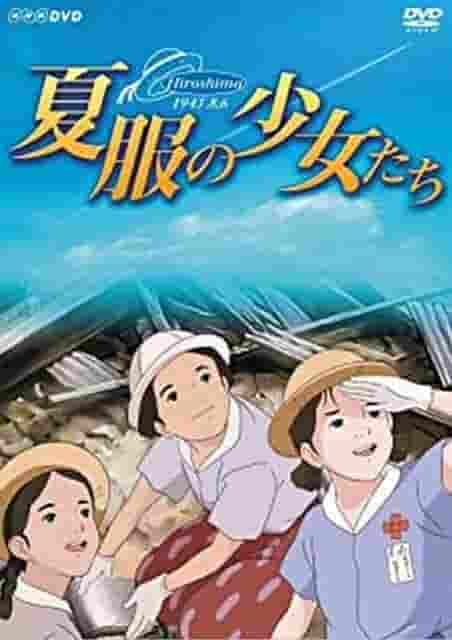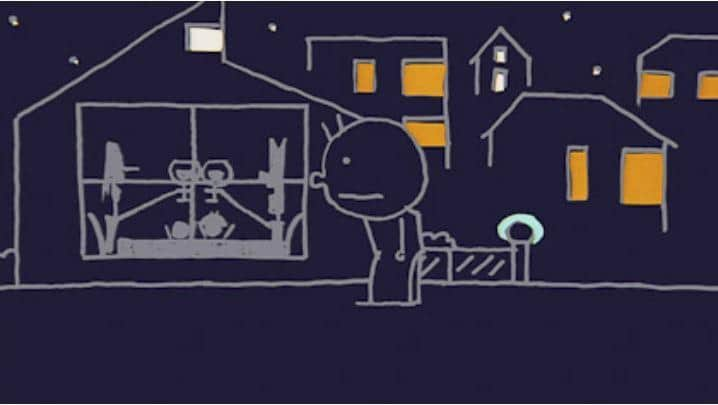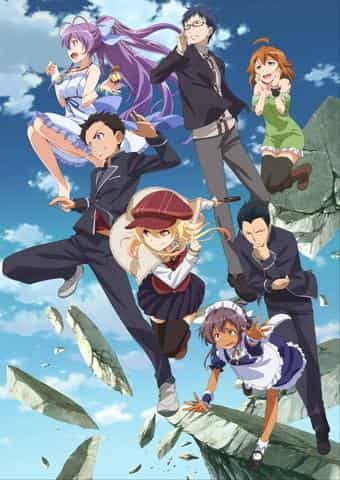Girls in Summer Uniforms: The Emotions and Evaluation of August 6, 1945, Hiroshima

Girls in Summer Uniforms - Hiroshima, August 6, 1945 -■ Public MediaTV Special ■ Original Medianovel ■ Broadcast periodAugust 7, 1988 - January 1, 0000 ■Broadcasting stationNHK Enterprises ■ Number of EpisodesEpisode 1 ■Original StoryMasako Ohno ■ DirectorToshio Hirata ■ ProductionAnimation Production: Madhouse Production: Tadami Watanabe, Masao Maruyama ■ StoryOne summer day just before August 6th of that year, an elderly couple visits the Hiroshima Atomic Bomb Museum carrying a furoshiki wrapping. Inside the wrapping is a schoolgirl's summer uniform, carefully folded and tattered by a high fever, that the couple had kept for a long time as a memento of their daughter. The story then flashes back to Hiroshima in 1945. In that summer, when the devastation of war in the country was becoming more real, the second and third year students of Prefectural First Senior High School were mobilized to work in factories, while the remaining 220 first year students were engaged in building demolition work. And then that tragic day came... ■ExplanationA special animated program combining live-action documentary footage to depict the tragedy caused by the atomic bomb dropped on Hiroshima City at the end of World War II. The original work is "Girls in Summer Clothes - Hiroshima, August 6, 1945" (Poplar Publishing), a record of the real-life experiences of atomic bomb survivor Ohno Masako. It was aired as part of the NHK special program "NHK Tokushu" with documentary footage of the surviving family members and an animated segment based on the real story of the time. ■ Main staff・Animation direction / Toshio Hirata ・Animation production / Madhouse ・Original story / Masako Ohno ・Script / Makiko Uchida ・Character design / Yoshiyuki Momose ・Chief animation director / Yoshiyuki Momose ・Art director / Kazuo Oga ・Music / Kosuke Onozaki ・Narration / Takashi Ishino ・Production / Tadami Watanabe, Masao Maruyama ■Detailed evaluation and recommendation"Girls in Summer Clothes - Hiroshima, August 6, 1945" is a special animated program broadcast on NHK in 1988, depicting the tragedy of the atomic bomb dropped on Hiroshima at the end of World War II. The film is based on a novel based on the real-life experiences of atomic bomb survivor Masako Ohno, and was produced in a format that combines documentary footage and animation. Below, we provide a detailed review and recommendation of the film. Story and ThemesThe story of this work revolves around the atomic bombing of Hiroshima City on August 6, 1945. The story begins with an elderly couple visiting Hiroshima Atomic Bomb Museum and receiving their daughter's summer school uniform, a keepsake. The uniform was ruined by the high heat of the atomic bomb and had been treasured by the couple for a long time. From this scene, the story goes back to Hiroshima City in 1945, depicting the situation at that time. At the time, second and third year students at Hiroshima Prefectural First High School were mobilized to work in factories, while 220 first year students were engaged in building demolition work. Then came the tragic day of August 6th. This film vividly depicts the damage caused by the atomic bomb and the subsequent suffering of the victims, and strongly emphasizes the themes of the horror of war and the preciousness of peace. Animation and video"Girls in Summer Clothes - Hiroshima, August 6, 1945" is a combination of animation and live-action documentary footage. The animation portion was produced by Madhouse and directed by Toshio Hirata. The animation realistically recreates the scenery and people's lives of Hiroshima at the time, and the scene of the atomic bombing successfully visually conveys the horror of the bombing. The live-action documentary footage also includes interviews with family members of the victims, directly conveying their suffering and sorrow. The combination of these two pieces of footage allows viewers to gain a deeper understanding of the tragedy of the atomic bomb. Characters and actingThe characters in this work are based on the real-life experiences of the original author, Masako Ohno, and are characterised by their realistic portrayal. In particular, the characters of the female students, who are the main characters, leave a strong impression on the viewer by illustrating the gap between the horrors of war and everyday life. Thanks to the skills of character designer and animation director Yoshiyuki Momose, the characters' expressions and movements are carefully drawn down to the smallest detail. Additionally, the voice of narrator Ishino Akira plays an important role in enhancing the overall atmosphere of the work. Ishino's calm narration helps the audience concentrate on the story and helps them to understand the theme of the work more deeply. Music and SoundThe music was composed by Kosuke Onozaki and is an important element in enhancing the atmosphere of the work. In particular, the music used in the scene of the atomic bombing creates a sense of tension, leaving a strong impression on the viewer. In the scenes of daily life, calm music is used, emphasizing the gap between the horror of war and everyday life. The sound effects, such as the realistic sounds of explosions and screams used in the scene of the atomic bombing, also play a role in conveying the horror to the audience. These music and sound effects enhance the atmosphere of the entire work, allowing the audience to become more immersed in the story. Recommendation"Girls in Summer Uniforms - Hiroshima, August 6, 1945" is a work that appeals to the horror of war and the preciousness of peace, and is one that should be seen especially by the younger generation. The film realistically depicts the tragedy of the atomic bombing and conveys the suffering and sorrow of the victims, deeply moving viewers. In addition, the format that combines animation and live-action documentary footage provides viewers with a fresh perspective and helps them to understand the theme of the work more deeply. This film was broadcast as part of the NHK special program "NHK Tokushu" and touched many viewers. I strongly recommend watching this film to learn about the history of war and to reaffirm the importance of peace. In particular, by incorporating it as part of school education, it will be possible to convey to the younger generation the horror of war and the preciousness of peace. ■ Additional informationThe series was broadcast on NHK on August 7, 1988, and is based on the novel "Girls in Summer Clothes: Hiroshima, August 6, 1945" (Poplar Publishing) by Masako Ohno. The screenplay was written by Makiko Uchida, character design and animation direction was Yoshiyuki Momose, art direction was Kazuo Oga, music was by Kosuke Onozaki, and narration was by Takashi Ishino. It was produced by Tadami Watanabe and Masao Maruyama, and animation was done by Madhouse. While this work depicts the tragedy of war, it also portrays the courage and hope of the atomic bomb survivors, deeply moving viewers. In particular, the scene in which the elderly couple receives their daughter's summer uniform, a keepsake, deeply touches viewers' hearts. This work will be an important educational material for learning about the history of war and reaffirming the importance of peace. |
<<: Urusei Yatsura: Angry!! Sherbet - Detailed Review of Series Event Screening #4
>>: Sunset Shell: A thorough review of the best songs from Minna no Uta
Recommend
The TV animation of the wonderful life story "My Favorite Child" is confirmed to be broadcast on April 12
The official TV animation of the youth manga &quo...
"Percy Jackson" new cast revealed, black version of Zeus debuts
Disney+ series "Percy Jackson" has ente...
Kitano Takeshi's "Kikujiro's Summer" confirmed to be introduced to mainland China and will be reunited in late summer this year
Kitano Takeshi's masterpiece "Kikujiro&#...
Memory resurrection! 30-year-old fantasy manga masterpiece "Guardian of the Ruins" will be made into a TV animation
Ryoji Minagawa's debut masterpiece, the 30-ye...
"The Thousand Noble Musketeers" review: A moving world woven with charming characters and a deep story
A comprehensive review and recommendation of Senj...
Four epic monsters are super violent! "Godzilla 2: King of the Monsters" bold new stills revealed
The new Hollywood blockbuster "Godzilla 2: K...
The appeal and reviews of Ninjala: A thorough explanation of the revolutionary action game
A comprehensive review and recommendation of the ...
The appeal and evaluation of "Ningyo Soushi Ayatsuri Sakon": A look into the depths of this masterpiece anime
"Ningyo Soushi Ayatsuri Sakon": A world...
The director and lead actor of "Justice League" calls for a "Zack Snyder Cut". Will Warner Bros. let it go?
Warner Bros.' classic superhero blockbuster J...
"The Promised Neverland" and Sony will launch a joint Walkman and headphones
Today, January 21, "The Promised Neverland&q...
World Masterpiece Fairy Tale Series: Wow! Fairy Tale Kingdom - A thorough analysis of the fascinating world of stories
World Masterpiece Fairy Tale Series: Wow! Fairy T...
Ushiwaka and Benkei: The appeal and reputation of an anime that combines history and legend
"Ushiwaka and Benkei": A masterpiece of...
"No Time to Die" appears on the cover of "Empire" with Bond elegantly dressed in a suit
The 25th film in the "James Bond" serie...
Movie version of "Mewtwo Strikes Back: Evolution" IGN 5 points: The biggest problem has not been solved
This year's "Pokémon" movie, "...
Spider-Man: Into the Spider-Verse cuts out the post-credits scene: The story is not over
In an interview with IndieWire, Phil Lord and Chr...









